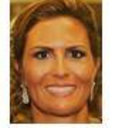Efficacy of diode-emitting diode (LED) photobiomodulation in pain management, facial edema, trismus, and quality of life after extraction of retained lower third molars: A randomized, double-blind, placebo-controlled clinical trial.
الكلمات الدالة
نبذة مختصرة
BACKGROUND
In dentistry, one of the most common surgical procedures is the removal of retained third molars. This surgery generates great morbidity to the participants for causing pain, edema, and trismus due to surgical trauma. The objective of the present study is to evaluate the efficacy of photobiomodulation with light emitting diode (LED) in the control of pain, facial edema, trismus, and quality of life resulting from the extraction of retained lower third molars.
METHODS
A randomized, double-blind, placebo-controlled clinical trial involving 38 adult participants, who meet the criteria of eligibility and agree to participate in the study. Before the surgeries are performed, the facial and mouth opening measures of all the participants will be taken. Immediately after the surgeries, participants will be randomized into 2 groups. In the LED group, participants will receive LED applications (intra oral with 660 nm, 12J and extraoral with 850 nm, 108J) in the immediate postoperative, first and second days after the surgical procedure. In the control group, the participants will be attended in the same way as in the LED group, however, the person in charge of the application will simulate the irradiation. Pain (EVA and NRS-101), postoperative edema, trismus, temperature, dysphagia, and hematoma will be evaluated after 1, 2, 5, and 7 days. The oral health impact profile (OHIP-14 Questionnaire) and anxiety analysis (Beck anxiety inventory -BAI) questionnaires will be applied preoperatively and 7 days after treatment. The appropriate statistical tests will be applied for each specific analysis in a significance level of 5%.
CONCLUSIONS
Although the use of low-power laser in the postoperative has shown good results in the control of postoperative sequelae, this is the first study on the efficacy of the use of LED in this situation.


